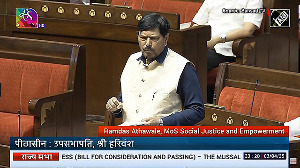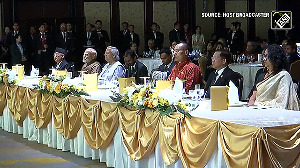The Indo-Gangetic plain, which has been the home to the Green Revolution that is now showing signs of fatigue, is witnessing an agricultural revolution of another kind.
This is aimed at transforming the Green Revolution into an evergreen Revolution by raising productivity at reduced costs and without impairing the health of vital natural resources like land and water.
The new revolution is based essentially on the concept of minimum tillage that is also often referred to as no-till, zero-tillage, or resource conservation technology.
Simply stated, the new concept revolves around replacing the age-old practice of massive cultivation (or inversion of soil through repeated runs of plough) with sowing a fresh crop without disturbing the soil after the harvest of the previous crop.
The objective is to undo the damage that has already been caused to natural resources due to the exhaustive wheat-rice cropping sequence practiced widely in the vast Indo-Gangetic plain.
The main tool required for planting a crop without disturbing the soil much is the seed-cum-fertiliser drill designed specifically for this purpose. It places seed and fertiliser nutrients at appropriate soil depth in a narrow slit during a single operation.
This not-too-complicated contraption is now being manufactured by scores of small-scale units in the countryside and costs, on an average, around Rs 21,000 (after the recent spurt in steel prices).
What is surprising is the speed at which the resource conservation technology is spreading, largely through farmer-to-farmer contact.
Equally amazing is the pace at which this technology is being refined and improved by farmers themselves to suit their specific situations. Of course, they have the full support and research and development backup of the public farm research system.
The manufacturers of the minimum-tillage drill are also readily incorporating need-based changes in the machine design based on the feedback from farmers.
In the process, this equipment has now developed into a highly efficient and versatile multi-crop planter. Notably, all this is happening largely because of private investment and private initiative, making it a stakeholders-driven revolution.
Scientists of the Indian Council of Agricultural Research, in cooperation with those from agricultural universities and other research organisations, have put together a basic framework of situation-specific packages of agronomic practices for resource conservation agriculture.
The success of the technology has caught the attention of even international farm experts who have begun promoting it in other countries as well. As a result, there is now demand for zero-tillage drill machines from various countries in the south, south-east and central Asia.
The ICAR which, besides promoting this revolution, has also been monitoring its progress, estimates that this technology was deployed on 1.63 million hectares in northern states in the just concluded rabi season.
Till a couple of years ago, there were merely a few hundred hectares under this technology. Potentially, it can spread to almost the entire Indo-Gangetic plain where wheat-rice cropping sequence is in vogue over about 10 million hectares.
Indeed, the new concept offers a slew of advantages over the conventional seed, fertiliser and irrigation-based Green Revolution technology.
These include timely planting of crop by saving the time that is normally consumed in repeated ploughing of land; saving on labour and tractor fuel costs; saving of irrigation water (residual moisture left behind in soil by the previous crop is usually adequate for seed planting); and saving of plant nutrients that are usually consumed by weeds and the resultant loss of crop yield due to this. (Least land disturbance and the presence of rubble left behind by the previous crop usually inhibit multiplication of weeds.)
Besides, this is an eco-friendly technology that helps in gainfully utilising the crop residues for improving the soil health instead of burning them (as most farmers do) to produce smoke and other pollutants.
Burning of each tonne of straw is estimated to produce nearly 3 kg of particulate matter besides substantial quantum of carbon mono-oxide, carbon dioxide, sulphur dioxide and ash -- all of which damage the environment.
Though many of the advantages of the new technology are difficult to quantify in monetary terms (such as saving in irrigation water and prevention of potential damage due to weeds and environment impairment), the ICAR reckons that the net cash gains from this technology can be anywhere between Rs 3,000 and Rs 6,000 a hectare.
Thus, in the 2004-05 rabi, benefits worth about Rs 600 crore (Rs 6 billion) are believed to have accrued to the farmers who have switched over to the new method of cultivation.
Actual field trials-based estimates also indicate that foreign exchange worth $40 million can be saved through a cut in fuel consumption for tillage and irrigation operations on every one million hectares brought under this technology.
These benefits, coupled with higher earnings due to better crop yield that this technology ensures, can help farmers boost their returns appreciably.








 © 2025
© 2025